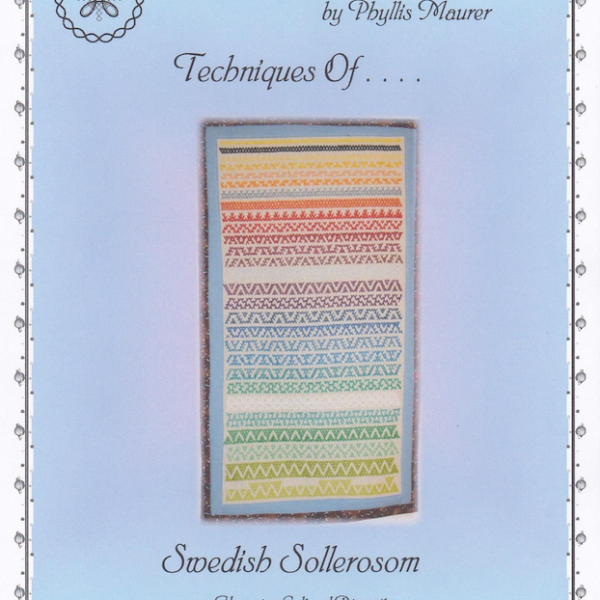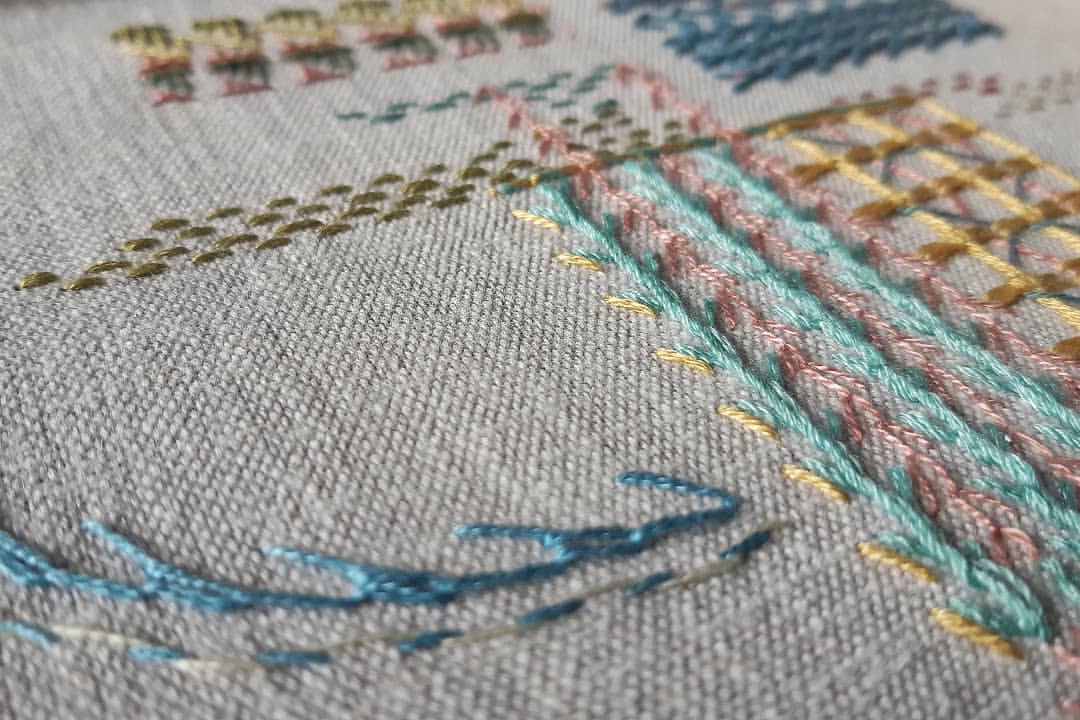This month, EGA sat down with an exceptional fiber artist to explore the creative processes behind her captivating felted art. You may recognize Kat McClelland’s work, which has been shared to EGA’s social media profiles and has gone viral several times online. Kat is a wool felting artist, working with both needle felting and wet felting techniques to create some of the most lifelike portraits we’ve ever seen in the medium. With a background in fine arts and a fascination for the human form, Kat brings a keen understanding of figurative art, color theory, and the many shades of humanity to her portraitures. We were excited to learn more about her process and gain insight into her work.
According to your website, you attended the Maryland Institute College of Art. What did you study there?
When I headed off to MICA I thought I was going to be a photography major. Growing up, I had a family friend who became a creative mentor. Bill Carter was a professional photographer, and he had always been one of my biggest fans. He took me under his wing when I was young to teach me photography. All it took was one photography class at MICA for me to realize Photography was not where I belonged. I was horrible at developing and in those days we were still all film and did the developing ourselves.
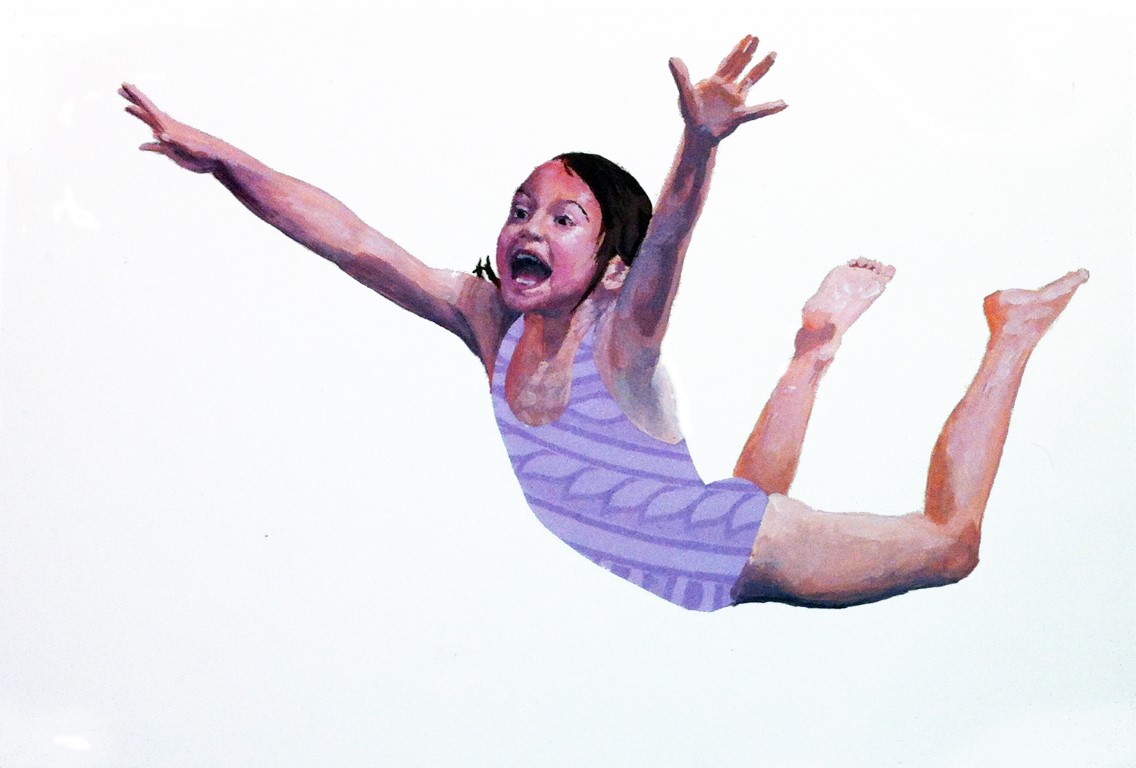
I started to gravitate towards fibers and ceramics and eventually settled on Ceramics as my major because I liked the fun vibe of that department. Doug Baldwin was part of the ceramics department, and while he was no longer the department head at that time, his sense of humor in his approach to his art played a big role in the studio. I managed to set up a ceramics studio after I graduated but it fell by the wayside after I had children. It is exceedingly difficult to maintain a clay studio with small children and full time work. I do still work in clay, mostly on the potter’s wheel. I will always love the physicality and grounding feeling of working with clay. It is precisely that kind of physicality that drew me to felting.

What was your first experience working with fiber?
My first experience with felting was in an Intro to Fibers class at MICA. To be honest, I remember very little of the experience other than we created wet felted pieces and it involved a washing machine. I began felting in earnest in 2015. I was on YouTube and came across someone’s needle felting videos. I bought some wool and needles to create things with my daughters. We made a few cute animals and I thought to myself: why not create an image with this technique? I started to experiment with it and fell in love.

How has a background in painting helped inform your felting process?
Painting was how I found my way back to making art for myself. In college I had made the decision that I was not a painter. MICA has a very strong tradition in drawing and painting and most of my classmates were very good. I looked around and said, well, guess I’m not a painter, because these people are so much better than me. So I didn’t paint.

However, when my children were young I couldn’t keep up with the ceramics so my creative practice became exclusively focused on my kids. I made crazy birthday cakes and spent insane amounts of time making them costumes. When my younger daughter turned four I started to feel the need to create art for me. I decided to dip a toe back into painting. Acrylic paints were fast and easier to manage than clay so I used the few tubes I had and painted portraits of my daughters. Yes, the art was still about them but it was for me. They weren’t horrible. So I kept at it. My subject matter was focused on children, often at play, because that was such a large part of my life.
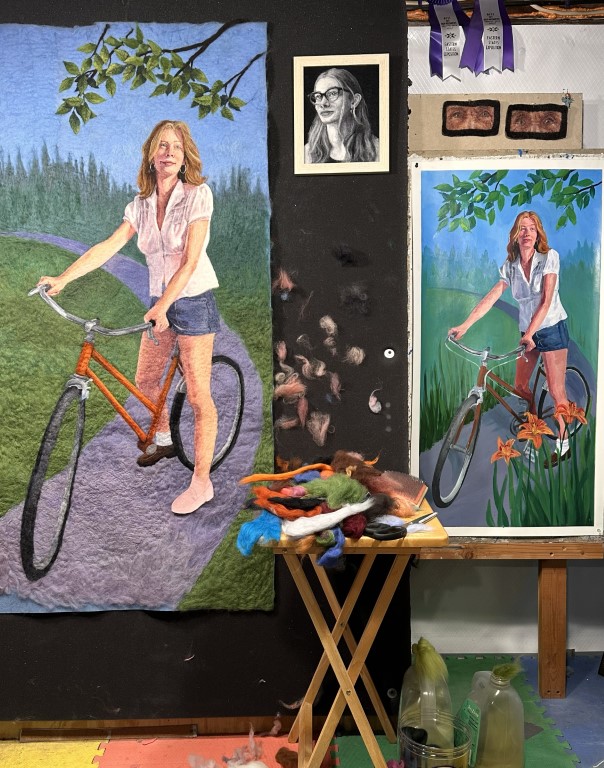
I was three years into this phase when I discovered felting. I essentially took what I was doing with paint and directly translated it into felt. There is a very strong painterly feel to needle felting two-dimensional images. Instead of brushes, I have barbed needles; instead of paint, I have wool, but so many of the concepts remain the same. I work into colored pressed felts as a canvas, just as you would work on a colored ground in painting. I build thin layers of color to create depth just as you would when glazing while painting. While mixing paint and blending fiber is different, the color theory behind it holds. All of my larger pieces start with sketches and painted color studies as it allows me to work out compositional and color decisions before I dive into the felting. Without drawing and painting, my feltings wouldn’t exist.
Why does your work focus on the human figure?
I’m human. That is maybe oversimplifying it, but it is essentially the root of where my interest comes from. There is something inherently relatable to the figure; we all inhabit a body and are able to connect to images that reflect ourselves. I am looking to tell a story and because of those natural connections, having my work center on figures helps carry a narrative.
I often use people who are close to me as models—that personal connection to my subject helps keep me engaged with the process. When you render someone you become familiar with them in a different way. It’s not just the personal connections though, there is beauty in the human form. I love to see all the amazing shapes and lines that are created by an endless variety of poses as we go about our daily lives. It’s fascinating to explore how emotion is conveyed not just through expressions but through body language.

You talk about emotion being conveyed “not just through expressions but through body language.” What kinds of emotions have you explored conveying through body language? What does that expression ultimately look like?
When I began felting, much of my work was focused on children, and play. Like my “Serious Play” series. There are four pieces in the series and each child is engaged in play and none of them are smiling. You do not get the sense they are unhappy though, quite the opposite; through their poses and expressions they convey the concentration and engagement they feel toward the activity they are involved in.

In my series of old stories reframed, like the “Lilith and Eve” piece, I wanted to create a sense of support and connection between the figures. My hope was to convey motherly protectiveness through Lilith’s embrace. For “Thank You,” I was responding to the preponderance of images that are created around intimate relationships between a man and a woman that portray the man enveloping the woman. In my image I wanted to portray a relationship that emphasized balance.

In each of these feltings, the expression is dependent on the context. I create these pieces with a certain emotion in mind, but ultimately it depends on the viewer’s experience as to how they read what I have portrayed.
Where do you find inspiration? What draws you to capture a particular figure in felted wool?
Often my pieces come from an idea or story I want to tell. That may be sparked by other artists, like the series I am currently working on, based on the work of Alphonse Mucha, or it might come from something someone has said or shared with me, like the Complicated History project, which was inspired by a post made by another artist I follow.

Sometimes it’s inspired by a challenge given to me, like when my husband gave me a beautiful mahogany frame that he made, which sparked the Lilith and Eve piece and then subsequently, Athena and Medusa as well as Astarte and Jezebel. I am also inspired by my own interests and people I admire, such as the Stacy Abrams piece.
What art styles are you drawn to?
I am drawn to all sorts of styles. Recently, I have been very much taken with the art nouveau style, in particular the work of Alphonse Mucha, who I mentioned earlier is the inspiration behind the series I am currently working on.

This piece is inspired by Alphonse Mucha’s “Topaz.”
I have always loved artists who use color and pattern, like Antoine Gaudi or Gutav Klimt, two artists I was familiar with from an early age. These days I am inspired by so many modern artists such as Bisa Butler, Tawny Chatmon, and Harmonia Rosales, Rebecca Leveille, all of these amazing ladies’ work, focuses on the figure but in different media; Bisa through fabric, Tawny through photography and paint, and Harmonia and Rebecca through paint. With all of the artists I am drawn to, there is a physicality to their work where you can see the process or the hand that created it present in the piece.

What does your design process look like? Can you walk us through the steps of designing a new felted wool piece?
I have two different ways in which I work. One way is portrait commissions. For those feltings, I work directly from a reference image. These tend to go more quickly than the pieces I create for myself as I am not creating environments or poses just simply replicating what I see in felt.
For the pieces I create because I need or want to, my process is considerably more complex and time consuming. Many of these pieces start as pencil sketches. I will often mull over an idea for months or even years before I get around to committing to a composition and begin felting.

My next step is to collect reference images that I patch together to create the environment and pose I am looking for. I will often create digital sketches as well, because it allows me to quickly make design and color changes. Once I have hashed out the big choices I will create a color study in paint. I do this because the more I render a subject the more familiar I am with it and I am able to think through how I will tackle it with wool. Through the digital and painting stages I can make decisions about color and composition so by the time I get to the felting, I have a clear idea of where I am going.
I plan out the layers of pressed felt I will use to create the image. Often I will have a large piece as the base layer and then the main figure or figures, and often the large compositional elements will have their own layers or colors of pressed felt. I will print the reference image full size and then use iron transfer markers to transfer an outline onto my pressed felt. This helps keep my proportions in check as I work, though I do need to keep an eye on them as the wool shrinks the more you felt it and can cause warping in the image. Sometimes I spend months needle felting the image. I work with a fine merino top, blending colors as I work. I rarely use a color on my felting that isn’t blended. I find that the blended colors have more depth and interest than using a single dyed color.

I work in layers as I needle felt, adding thin layers on top of each other to get the colors and values I need. After I have built the image through needle felting, I wet felt it. This process is much quicker and more physical. Wet felting has been around for thousands of years. You use hot water, soap, and agitation to meld the fibers together permanently. This step is not strictly necessary. Since my images are meant to hang on a wall they do not need to be wet felted, I could leave it at the needle felting and call it done. I like the surface of a wet felted piece. It has a sheen and softness to it that you can’t get from a needle felted image. After I have wet felted the image, the whole thing is rinsed and dried. I will then go back into the image with needle felting to clarify any details that have been lost, and recently I have been adding black outlines to all my images. Sometimes I will add beading or stitching to embellish the image. My last step is to hand stitch my signature and then either add a hanging sleeve or frame the piece.

Do you have any favorite tools or fibers?
I use almost exclusively Merino Wool 19.5 micron because the super fine fibers blend beautifully. For a canvas I use 100% wool pressed felt, often in multiple layers using cut outs to help keep the main elements crisper through the needle and wet felting stages. For needle felting I use a clover pen style needle felting tool because it’s super easy to change the needles and is lightweight.
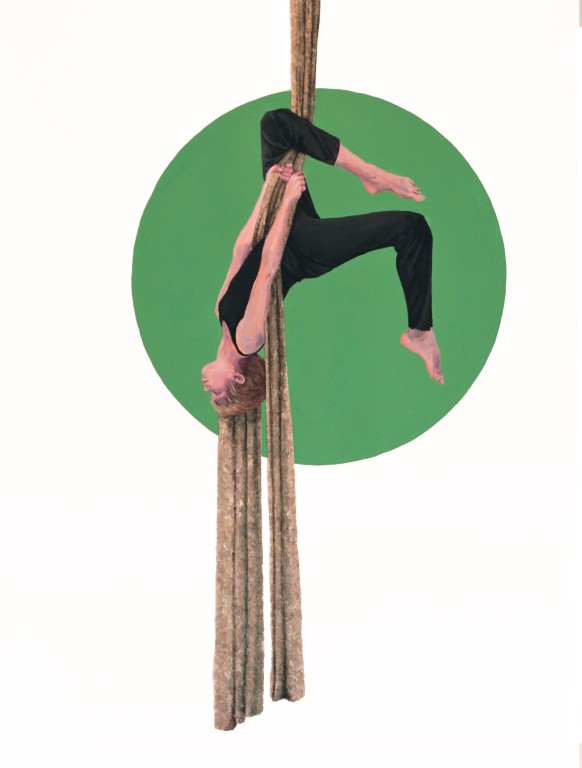
Why is fiber your chosen medium? What do you love about working with fiber?
I am someone who loves process. There is something uniquely engaging about creating things using a process that has existed for thousands of years. I have found it is the perfect mix of painterly expression and physical process that satisfies me in a way that other mediums have not. It also falls into the category of textiles which, in our culture, is mostly relegated to women. Creating textile art with a social commentary feels appropriate and in line with a long tradition of women makers who used this discipline to have a voice in a world that would prefer their silence.

How long does it take to complete a felted wool piece? How do you know when a piece is finished?
It can take me anywhere from 10 to over 100 hours to complete a piece. It all depends on the size and complexity of the image. As far as knowing when it’s done, that’s more difficult. Sometimes I think it’s done, I wet felt it, refine it, frame it, hang it on a wall, or even show it, to then decide it’s not right and rework it.
Do you have any advice for other needleworkers interested in exploring wool felting?
Start small and with a subject matter that you are comfortable with. If you start with something familiar it will give you a chance to learn the process without the added confusion of tackling a new subject matter. A starter’s kit that includes needles, some wool, a felting surface and a canvas of some sort is a great way to dip your toe in without a huge investment.
Taking a class is always an option too; and shameless self promotion here, I have an online class you can take that walks you through a black and white needle felted portrait: https://www.katmcclelland.com/workshops
You can take a class with me or someone else or watch a bunch of YouTube videos like I did, take whatever approach feels comfortable for you and have fun.
Thank you to Kat for allowing us this opportunity to take a closer view of her work. You can find Kat on Instagram, TikTok, Facebook, and online at https://www.katmcclelland.com/.






